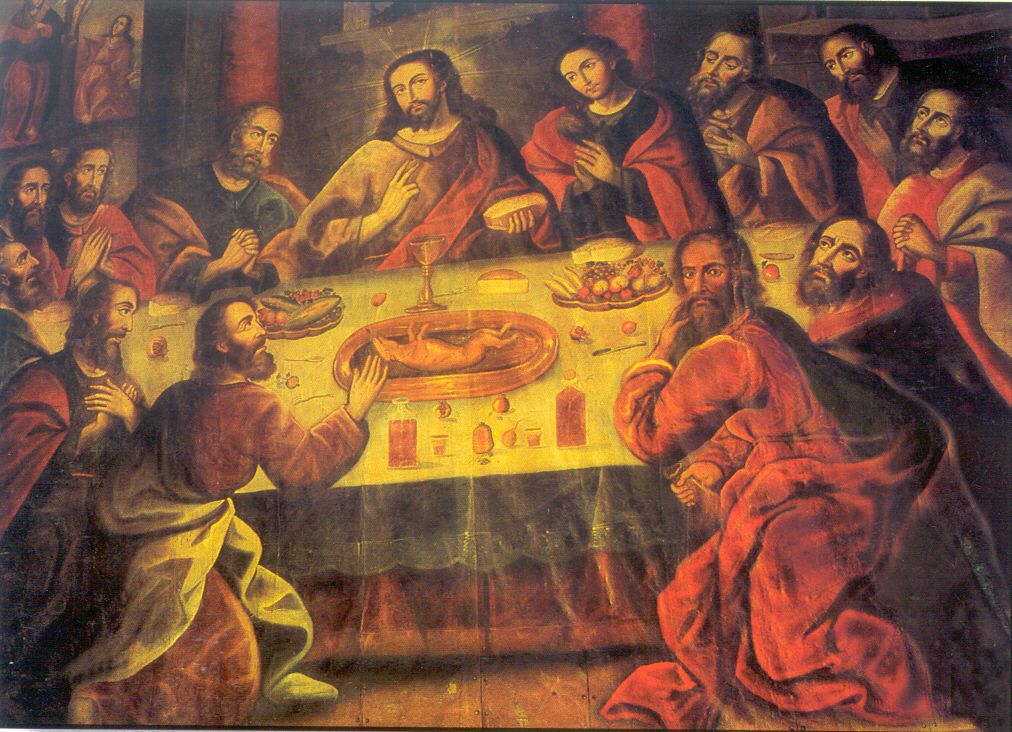[ENG]
In retrospect, I am not so sure what meant that in one of the most beautiful cities in Peru, in the capital of the Inca Empire, in the city inscribed on the UNESCO World Heritage List, the name of which is translated into Quechua as "the navel of the world" not a single photo. Our bad moods were probably due to the fact that when we got to Cuzco, it was about then that our hopes for improving the weather in Peru were completely blurred in the daily torrential rain.
Since we do not have any photos, in order to present the appearance of Cuzco, I will try to describe its most characteristic point, i.e. the main city plan, as it is called everywhere in South America; Plaza De Armas. The square is quite large and the whole square is slightly sloped, which means that, standing at its top in the eastern part, we can admire the beautiful hills surrounding the city. In the eastern corner of the square, on your left, we have a larger cathedral church, but less impressive on the outside, and on the right, a smaller, but more sumptuous outside, the church of Companía de Jesús. Speaking more sumptuous, I mean perhaps the most beautiful church facade on this continent. If we looked inside both temples, the situation becomes quite the opposite. It is the Cathedral that is less attractive from the outside and the inside turns out to be filled with pictures of the colonial period, the most interesting of which is probably the Peruvian variation on the Last Supper. In this Peruvian version, the paschal table is filled with tropical fruits and… roasted guinea pig. Yes, guinea pigs are a Peruvian delicacy, but were they a delicacy in Jerusalem 17 centuries earlier? I dare to doubt… The other two frontages of Plaza De Armas, although very nice in terms of architecture, their arrangement leaves much to be desired. One-third are more or less exclusive restaurants (all of them obligatorily served roasted guinea pigs and llama chops). The next, third part is incredibly flashy travel agencies competing in the attractiveness of Machu Picchu trip offers. The remaining places are clothing stores where you can buy everything from socks through pants, sweaters to caps made of llamas and alpacas.
A certain characteristic flag flies not only over the main town square, but also over the entire city. At first I thought it was an Incas branch of the LGBT community, but it turns out to be nothing more wrong. There is a group of historians claiming that the rainbow was a symbol commonly used by the Inca state, and since Cuzco was their capital, the current flag of the city should refer to pre-Columbian history. So, since 1973, the rainbow flag has been the official flag of the city, and as a curiosity, I would like to add that the LGBT community did not start using these colors until 5 years later in 1978.
[PL]
Z perspektywy czasu nie jestem już taki pewien, co spowodowało, że w jednym z najpiękniejszych miast w Peru, w stolicy imperium inkaskiego, w wpisanym na Listę Światowego Dziedzictwa UNESCO mieście, którego nazwę Cuzko tłumaczy się na język keczua jako „pępek świata” nie zrobiliśmy ani jednego zdjęcia. Nasze złe nastroje wynikały pewnie z tego, że gdy dotarliśmy do Cuzco to mniej więcej właśnie wtedy nasze nadzieje na poprawę pogody w Peru rozmyły się doszczętnie w strugach codziennego nawalnego deszczu.
Skoro nie mamy żadnych zdjęć to aby przybliżyć wygląd Cuzco postaram się opisać jego najbardziej charakterystyczny punkt czyli główny plan miejski zwany jak wszędzie w Ameryce Południowej; Plaza De Armas. Plac jest dość duży i cały znajduje się w pewnym spadku, co powoduje, że stojąc u jego szczytu we wschodniej części możemy podziwiać piękne wzgórza otaczające miasto. Stoją we wschodnim narożniku placu po swojej lewej stronie mamy Większy ale mniej okazały z zewnątrz kościół katedralny, a po prawej stronie mniejszy, ale z bardziej okazałym zewnętrzem kościół Companía de Jesús. Mówiąc bardziej okazały mam na myśli chyba najpiękniejszą fasadę kościoła na tym kontynencie. Gdybyśmy zajrzeli do wnętrza obu świątyń to sytuacja staje się zgoła odwrotna. To Katedra z zewnątrz mniej atrakcyjna w środku okazuje się wypełniona obrazami okresu kolonialnego z czego najciekawszy obraz to chyba peruwiańska wariacja na temat Ostatniej Wieczerzy. W tej peruwiańskiej wersji stół paschalny wypełniony jest tropikalnymi owocami oraz… pieczoną świnką morską. Tak świnki morskie, to peruwiański przysmak, ale czy w Jerozolimie 17 wieków wcześniej też były przysmakiem? Śmiem wątpić… Pozostałe dwie pierzeje Plaza De Armas choć architektoniczne bardzo ładne, to ich zagospodarowanie pozostawia wiele do życzenia. Jedna trzecia to mniej lub bardziej ekskluzywne restauracje ( wszystkie obowiązkowo serwują pieczone świnki morskie i kotlety z lamy). Kolejna trzecia część to niesamowicie krzykliwe biura podróży prześcigające się w atrakcyjności ofert wycieczki do Machu Picchu. Pozostałe lokale to sklepy odzieżowe w których można kupić wszystko od skarpetek poprzez spodnie, swetry aż po czapki wykonane z wełny lam i alpak.
Pewna charakterystyczna flaga powiewa nie tylko nad głównym placem miejskim ale również nad całym miastem. W pierwszej chwili myślałem, że to Incaski oddział środowisk LGBT, ale okazuje się że nic bardziej mylnego. Jest pewna grupa historyków twierdzących, że tęcza była symbolem powszechnie używanym przez państwo inków, a skoro Cuzco było ich stolicą no to obecna flaga miasta powinna nawiązywać do przedkolumbijskiej historii. Tak więc od 1973 roku tęczowa flaga jest oficjalną flaga miasta, a jako ciekawostkę dodam, że środowiska LGBT tych barw zaczęły używać dopiero 5 lat później w roku 1978.
Cuzco flag.
Flaga Cuzco.
The Last Supper in the Peruvian version.
Ostatnia wieczerza w peruwiańskiej wersji.


